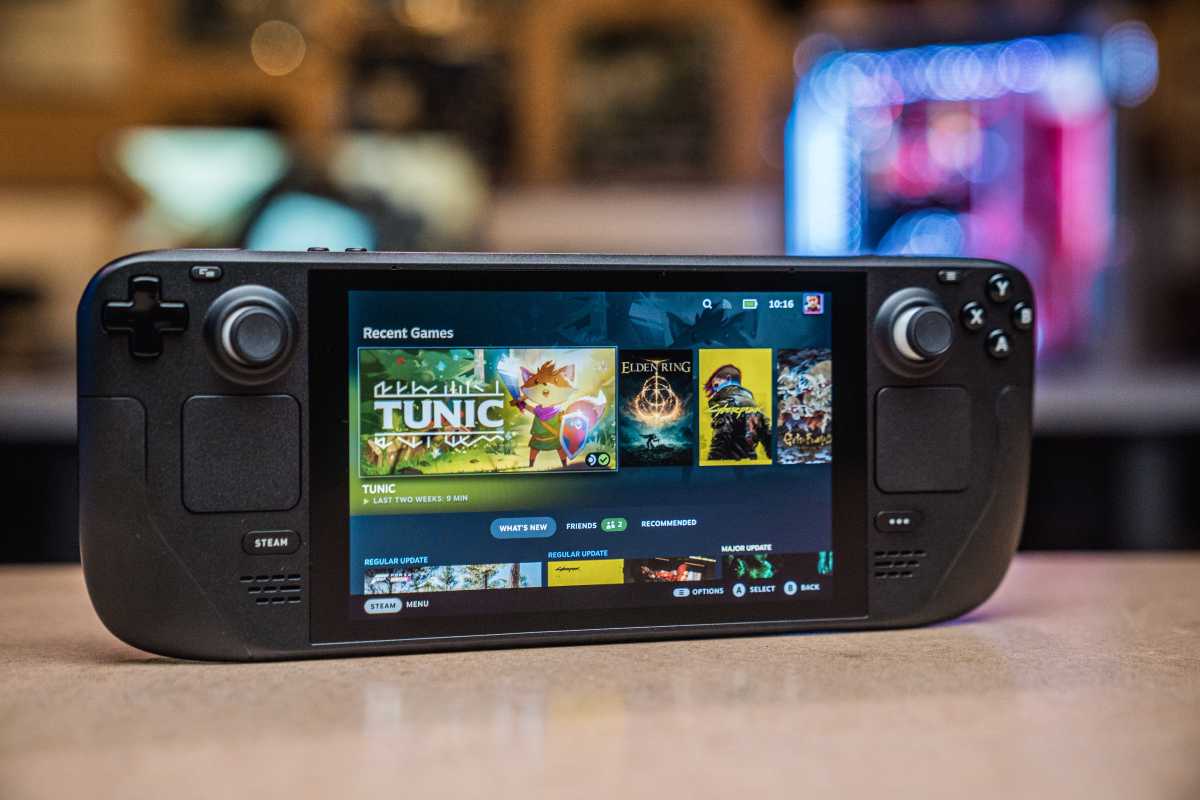
 Image: Qualcomm
Image: Qualcomm
Logitech has had a growing presence in the PC gaming market for years, but it looks like the company is preparing to expand in a big way. According to a blog post, Logitech is teaming up with Chinese mega-publisher Tencent to create a dedicated gaming handheld in the style of Nintendo’s Switch or Valve’s Steam Deck. Here’s the twist: instead of primarily focusing on local games, as has been the model since the original Game Boy, this one will focus on streaming cloud games.
“The new device will support multiple cloud gaming services, and both companies are working with the Xbox Cloud Gaming and Nvidia GeForce Now teams,” Logitech says in its press release. Invoking the names of the two leading game streaming platforms is telling. While the Switch is based on Nvidia’s Tegra platform originally meant for high-end, ARM-based mobile gaming, and the Steam Deck uses an ultra-efficient version of AMD’s x64-based Ryzen platform also seen in laptops, the as-yet-unnamed and unseen Logitech G handheld could minimize local hardware almost entirely, offloading most of the heavy lifting of graphics and gameplay to remote streaming servers.
The announcement claims that the Logitech handheld is planned for release by the end of this calendar year. No technical details were posted, but a streaming-focused device certainly implies an ARM-based gaming machine, perhaps similar in size and form factor to something like the Ayn Loki, GPD XD Plus, and various other mobile game machines. Foregoing expensive hardware necessary for high-end local playback might allow the device to come in at an incredibly competitive price point.
Logitech and Tencent are the latest in a long line of companies that have tried to muscle in on Nintendo’s dominance of dedicated portable gaming machines. After gaming competitors Sega and Sony gave up on the Game Gear and PSP, Nvidia gave it a shot with its original Shield handheld, before shifting focus to tablets and then set-top boxes. “Gaming phones” like the Asus ROG and Black Shark series are a growing niche, but they seem to be gaining very slow ground outside of the Asian market, where buyers are more likely to see phones as their primary or even sole gaming platform.
Razer and Qualcomm teamed up for a Snapdragon-powered portable game concept device earlier this year (pictured above), but little seems to have come from it so far. While mobile gaming on Android and iOS remains an incredibly lucrative part of the games industry — the most profitable sector, in fact — stand-alone game machines built around mobile games have yet to hit the mainstream. In-between accessories like the Razer Kishi are about as close as we’ve come.

Willis Lai/Foundry
Willis Lai/Foundry
Willis Lai/Foundry
Indeed, the biggest mobile gaming competitor to hit the market since the launch of the Switch in 2017 is Valve’s Steam Deck, a device that’s larger, more expensive, and which leverages PC gaming’s most dominant marketplace as a pre-existing platform. Valve’s PC-focused approach hits portable gaming from a fresh angle, and so will the Logitech G device. Both the Steam Deck and the Nintendo Switch are capable of streaming games (the latter does so for some titles that its ARM-based hardware can’t handle, like ports of Control, Kingdom Hearts 3, and Dying Light 2), but are still very much focused on games loaded and running on the handheld hardware itself.
We’ll be keeping a close eye out for this Logitech G streaming device later this year.
Author: Michael Crider, Staff Writer

Michael is a former graphic designer who’s been building and tweaking desktop computers for longer than he cares to admit. His interests include folk music, football, science fiction, and salsa verde, in no particular order.
Recent stories by Michael Crider:
Sony surrenders: Helldivers 2 won’t require PlayStation login on PCHelldivers 2 now mandates PlayStation accounts and PC gamers are MADThirsty modders put Baldur’s Gate III romance in Stardew Valley



